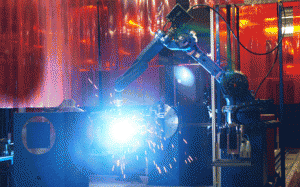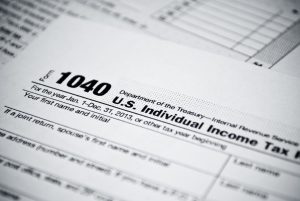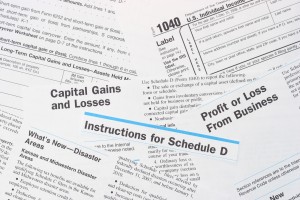Perhaps you have considered trying for the R&D credit in the past for your business, but you ruled it out. You may have weighed the benefits vs. the costs, and the documentation requirements alone made you decide that this insubstantial credit just wasn’t worth your time.
Or, perhaps you’ve gotten the message that this credit doesn’t apply to your type of business. Or maybe you’re still in start-up mode, and you’ll think about tax credits in the future, when your company is turning a profit.
There have been a number of good reasons why this credit has been underused by small- and medium-sized businesses. Information has been unclear, and hurdles have been high.
 I am happy to report some good news: Recent developments have made the R&D credit substantially more beneficial for many businesses, and now is an excellent time to take a new look at this. Doing so could amount to a few thousand additional dollars for your business R&D imageeach year – and possibly, quite a bit more.
I am happy to report some good news: Recent developments have made the R&D credit substantially more beneficial for many businesses, and now is an excellent time to take a new look at this. Doing so could amount to a few thousand additional dollars for your business R&D imageeach year – and possibly, quite a bit more.
Here are five good things to know now about the R&D tax credit:
1) Getting this credit can be simpler and more lucrative. Here’s the main reason why: A provision passed in June 2014 allows companies to submit an Amended Simplified Credit (ASC) on amended returns.
This might sound obscure … but stay with me! As a matter of fact, the ACS provision is completely changing the math for many businesses, especially mid-sized and smaller. Because the ACS can now can be submitted on amended returns for all open tax years (usually three years plus the current year), the benefits can be much more substantial. For example, before this provision a small company might have received $25,000 for one year’s R&D credit, an amount the company may have deemed not worth the time and documentation required to get the credit. But under the new provision, by submitting amended returns, this same company can see credits of $100,000 or more.
Another big help for businesses is that getting this R&D credit is more user-friendly. Previously, companies were required to establish a strong case that they are creating innovative technology with thorough documentation – frequently, referencing developments going back for decades – to meet the IRS’s rigorous criteria for this R&D credit. And, calculating the credit amount was daunting in its complexity.
This has improved greatly. The IRS has a set list of criteria for what it considers to be valid R&D, and these criteria can apply to many types of product improvements and updates. While companies are still required to provide ample documentation to substantiate their claims, meeting the requirements can be much less of a battle than it has been in the past.
Also, with the new ACS, determining the credit amount is vastly simplified – again, making this process more feasible for smaller organizations. With the ACS, the tax credit is based on a simple formula: Averaging the previous three years of R&D investments, and then dividing that average number in half. The credit is 14 percent of any qualified expenditures over that number.
2) Timing-wise, this credit is much more useful for start-ups. Newer companies that can’t go back three years can use 6 percent of qualified research expenses for the current year.
And, an even more helpful provision is that the credits have a 20 year carry-forward period. Start-ups that do not have taxable income in their early years can take the credits in the future, when they have taxable income.
3) This is for real-world R&D in many types of industries, such as manufacturing, health care, and food processing, among others. If you are investing in finding ways to improve the performance or quality of your products, this credit can apply to you. The credit allows the use of “existing technologies,” because innovation happens across industries and can drive need for new products across markets.
Here is simplified example: A robotics breakthrough at a university opens up the possibility of improved automation for a factory that produces nutrition bars. This new automation technology is researched and developed, and the new design doubles the speed of nutrition bar production. This in turn, sparks designs for faster bar packaging equipment, as well as improved inventory tracking technology, more sophisticated logistics software, and so on.
The credit could apply to all of these innovations. The IRS has a set of criteria for what they consider R&D, but the overall idea for this credit is that it supports “applied science” just as much as “basic science.”
3) There are state R&D credits, too. If you meet the qualifications for federal R&D credits, you likely meet the qualifications for your state (most of which have R&D incentives in place). Minnesota, for example, provides credits for Minnesota-based businesses, as long as the R&D happens within the state.
4) Getting the R&D credit is simpler… but it’s still not that simple. Yes, progress has been made to make this funding more accessible, but obtaining the credits still requires some know-how. Multiple factors need to be considered and executed carefully. (Do you have adequate documentation of your R&D efforts? What materials, employee time percentages, and other costs qualify as expenses? Importantly, are you being consistent in how these expenses are classified from year to year?)
There is potentially a lot of money at stake here, and consequently, the IRS classifies the R&D credit as a “tier 1” issue. This means that you can expect higher levels of scrutiny. Bottom line, it is likely that you will want professional help with this.
Until very recently, obtaining these credits have been somewhat of a challenge for all but the largest of companies, with their legions of accounting professionals. Therefore, the actual distribution of this credit has been disproportionate, with the bulk of the funding going to a small group of large corporations.
Yet, small- and mid-sized businesses are primary drivers of American innovation and job growth. According to the Small Business Administration, 60 to 80 percent of new jobs are created in small- to middle-market businesses. Now’s the time for more businesses of all sizes to tap into this valuable source of funding!
Congratulations… You’ve read the list of 5 good things to know. Here are 2 main takeaways to remember:
1) It doesn’t hurt to ask! This funding is meant for many types of business, and self-censoring has been a main obstacle for small- and medium-sized operations to get their share. If you think there’s a chance this might apply to you, it’s worth asking your tax professionals. You could join the many businesses that are finally getting the credits they deserve!
2) Don’t hesitate! There’s still time to take advantage of this credit, if you contact your tax professionals about it now.
Good luck, and if you have a medium-sized or smaller business, thank you for your important role in American innovation and job growth.
Image credit: KarlSvensson99 (Own work) [CC BY-SA 3.0,via Wikimedia Commons
 The calendar has turned to 2017. It’s time to start preparing for 2016 income tax returns if you haven’t already done so. We’ve put together some helpful information and dates to keep in mind as you prepare your return.
The calendar has turned to 2017. It’s time to start preparing for 2016 income tax returns if you haven’t already done so. We’ve put together some helpful information and dates to keep in mind as you prepare your return.




